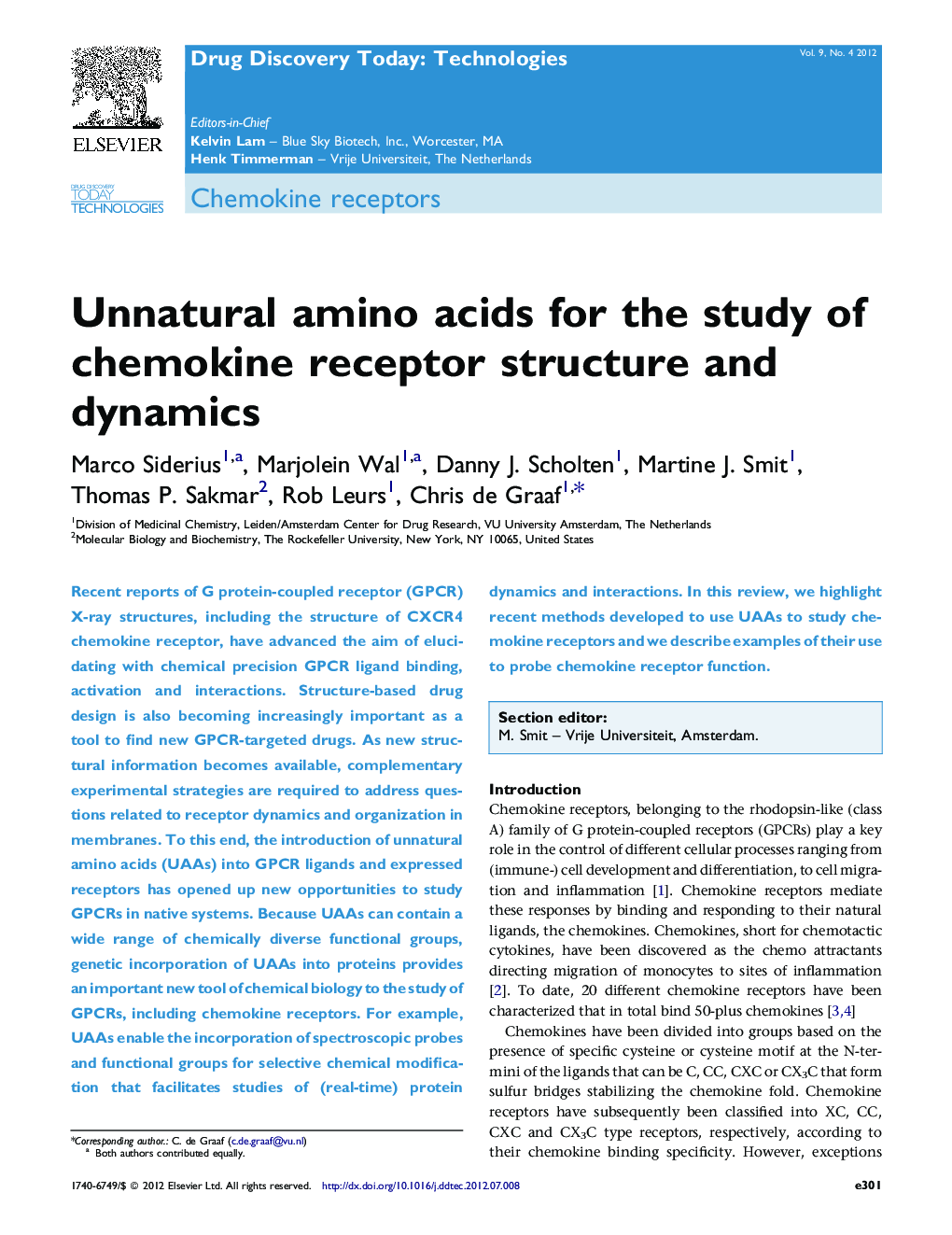| Article ID | Journal | Published Year | Pages | File Type |
|---|---|---|---|---|
| 2082512 | Drug Discovery Today: Technologies | 2012 | 13 Pages |
Recent reports of G protein-coupled receptor (GPCR) X-ray structures, including the structure of CXCR4 chemokine receptor, have advanced the aim of elucidating with chemical precision GPCR ligand binding, activation and interactions. Structure-based drug design is also becoming increasingly important as a tool to find new GPCR-targeted drugs. As new structural information becomes available, complementary experimental strategies are required to address questions related to receptor dynamics and organization in membranes. To this end, the introduction of unnatural amino acids (UAAs) into GPCR ligands and expressed receptors has opened up new opportunities to study GPCRs in native systems. Because UAAs can contain a wide range of chemically diverse functional groups, genetic incorporation of UAAs into proteins provides an important new tool of chemical biology to the study of GPCRs, including chemokine receptors. For example, UAAs enable the incorporation of spectroscopic probes and functional groups for selective chemical modification that facilitates studies of (real-time) protein dynamics and interactions. In this review, we highlight recent methods developed to use UAAs to study chemokine receptors and we describe examples of their use to probe chemokine receptor function.
